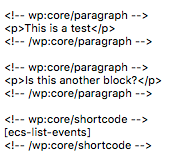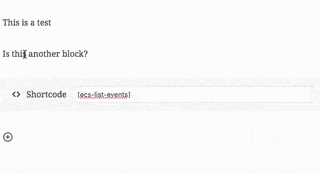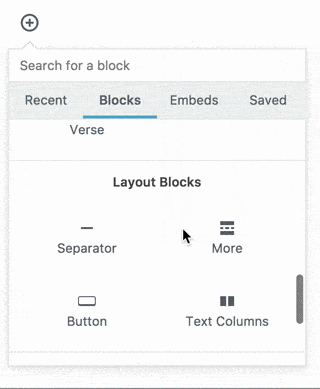If you’ve been following any WordPress news lately, you can probably guess that many conversations at WCUS surrounded Gutenberg, the new block-based editor that Matt Mullenweg and others are pushing hard to get into core for the next WordPress 5.0 release.
I’m still pretty set on not having it be included in core with the next release and to keep it as a plugin. It’s far from ready, and the current plan is to push it out by April of next year.
While it’s in constant development and things are still being improved, there’s a few huge issues I can’t see all being sorted out and well tested by then. One is that the content blocks are being stored as HTML in the_content, rather than as a well-structured data format:

Hitting “enter” when you’re writing content will create a new Paragraph block, making it hard to edit. Move the mouse over a block and the floating format bar covers your previous content, and you can’t select the text to update formatting between two of them (ie. to turn it into a bulleted list):

The list of blocks is already huge, and will only grow as more plugins start adding their own Gutenberg blocks to the list. It needs a better UI to handle it:

The editor currently has poor accessibility for those using screen readers and other assistive devices.
Last but not least, existing editor meta boxes, to add additional data as part of the content (like Yoast SEO details, etc) are not fully supported. Instead, WordPress would switch between the “classic” editor from the new editing experience if even one plugin indicates it’s not compatible with Gutenberg.
Conclusion
An overhaul of the editor is certainly overdue, but there’s a long way to go before something like this would be ready for the masses in WordPress core. Fundamentally this editor tries to give “what you see is what you get” support, yet the theme and other plugins are free to completely change how things actually look when you view your content on the site.
Not to mention how it will affect free and commercial plugins that work with the existing editor in any way and would have very little time to do an overhaul.
You can install Gutenberg on a test site and give it a try if you haven’t already, and subscribe to Make WordPress Core to get updates and news on when the eventual merge proposal comes up.
You can also post any issues you find on the Gutenberg Github (after reading the contributing guidelines), and check out some other reading and resources:
- Morten’s excellent talk at WCUS, with the goal of encouraging as many people to really try it out for themselves
- Matt Scheurich encouraging comment on Gutenberg and the hope it will inspire a wave of modernization for WordPress
- An article from Yoast on an alternative approach to Gutenberg, where some of the suggestions have already been implemented
- The Gutenberg Handbook, which includes an introduction to creating your own blocks
Maybe one day Gutenberg will have its place in core, but not by April.